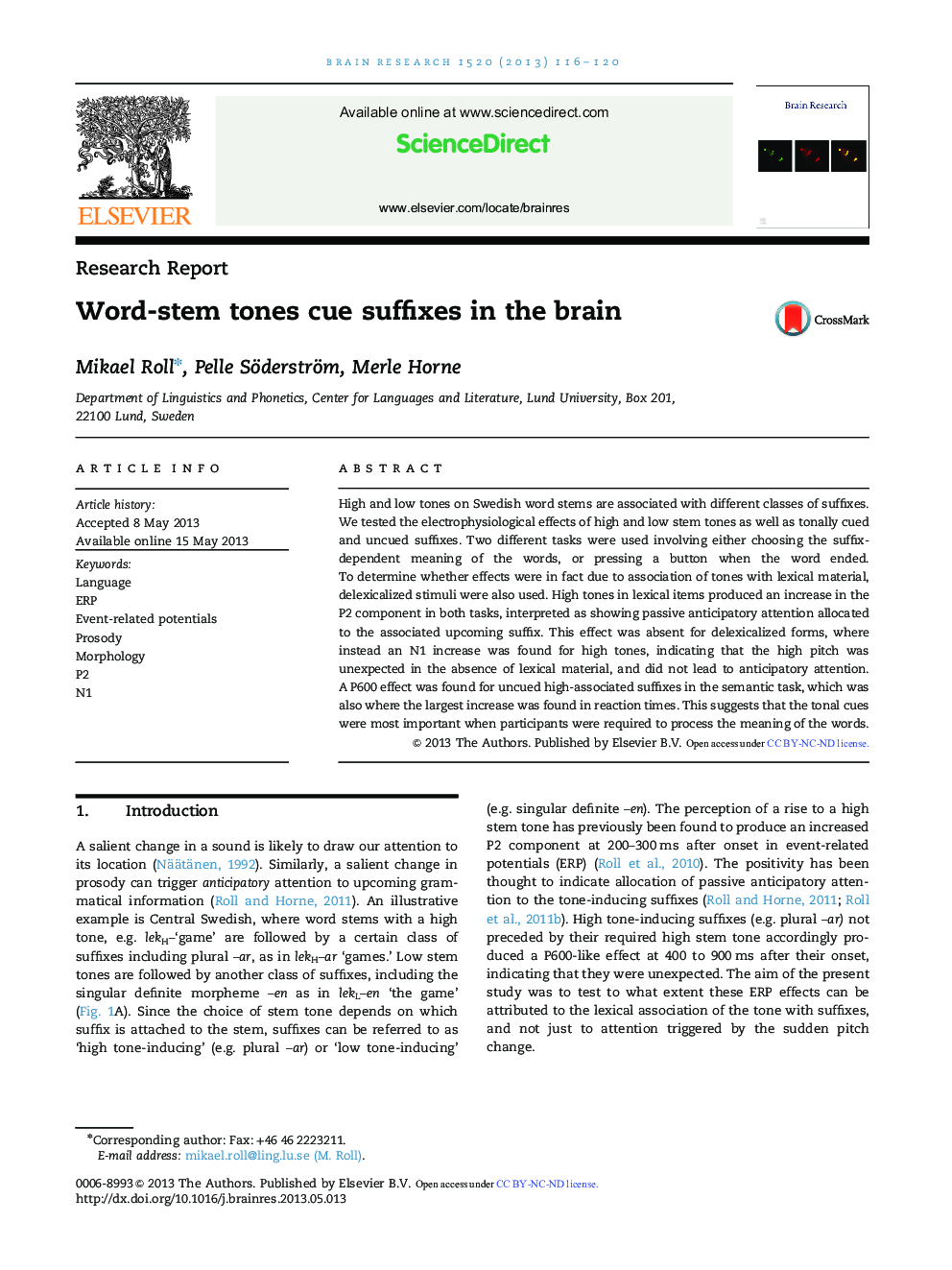| کد مقاله | کد نشریه | سال انتشار | مقاله انگلیسی | نسخه تمام متن |
|---|---|---|---|---|
| 6263816 | 1613919 | 2013 | 5 صفحه PDF | دانلود رایگان |

- High stem tones produced an increase in the P2 component in the ERPs.
- There was no effect for high stem tones in delexicalized words.
- Stem tones function as signals cueing upcoming suffixes.
- Cueing is mediated by a lexical association.
High and low tones on Swedish word stems are associated with different classes of suffixes. We tested the electrophysiological effects of high and low stem tones as well as tonally cued and uncued suffixes. Two different tasks were used involving either choosing the suffix-dependent meaning of the words, or pressing a button when the word ended. To determine whether effects were in fact due to association of tones with lexical material, delexicalized stimuli were also used. High tones in lexical items produced an increase in the P2 component in both tasks, interpreted as showing passive anticipatory attention allocated to the associated upcoming suffix. This effect was absent for delexicalized forms, where instead an N1 increase was found for high tones, indicating that the high pitch was unexpected in the absence of lexical material, and did not lead to anticipatory attention. A P600 effect was found for uncued high-associated suffixes in the semantic task, which was also where the largest increase was found in reaction times. This suggests that the tonal cues were most important when participants were required to process the meaning of the words.
Journal: Brain Research - Volume 1520, 3 July 2013, Pages 116-120